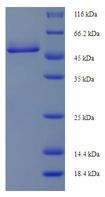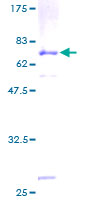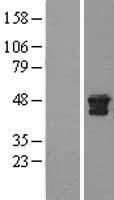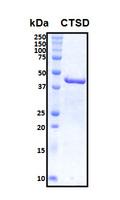order histories, retained contact details for faster checkout, review submissions, and special promotions.
Forgot password?
order histories, retained contact details for faster checkout, review submissions, and special promotions.
Locations
Orders Processing,
Shipping & Receiving,
Warehouse
2 Shaker Rd Suites
B001/B101
Shirley, MA 01464
Production Lab
Floor 6, Suite 620
20700 44th Avenue W
Lynnwood, WA 98036
Telephone Numbers
Tel: +1 (206) 374-1102
Fax: +1 (206) 577-4565
Contact Us
Additional Contact Details
order histories, retained contact details for faster checkout, review submissions, and special promotions.
Forgot password?
order histories, retained contact details for faster checkout, review submissions, and special promotions.
CTSD / Cathepsin D
cathepsin D
CTSD / Cathepsin D is a lysosomal aspartyl protease composed of a dimer of disulfide-linked heavy and light chains, both produced from a single protein precursor. This proteinase, which is a member of the peptidase C1 family, has a specificity similar to but narrower than that of pepsin A. Transcription of this gene is initiated from several sites, including one which is a start site for an estrogen-regulated transcript. Mutations in this gene are involved in the pathogenesis of several diseases, including breast cancer and possibly Alzheimer disease. In Chinese hamster the protein Cathepsin D is encoded by the gene H671_3g9701 (Uniprot G3I4W7).
| Gene Name: | cathepsin D |
| Family/Subfamily: | Protease , Aspartic A1 |
| Synonyms: | CTSD, CPSD, CLN10, Lysosomal aspartyl peptidase, Lysosomal aspartyl protease, ProCathepsin D, CatD, Cathepsin D |
| Target Sequences: | NM_001909 NP_001900.1 P07339 |
Publications (2)













If you do not find the reagent or information you require, please contact Customer.Support@LSBio.com to inquire about additional products in development.









